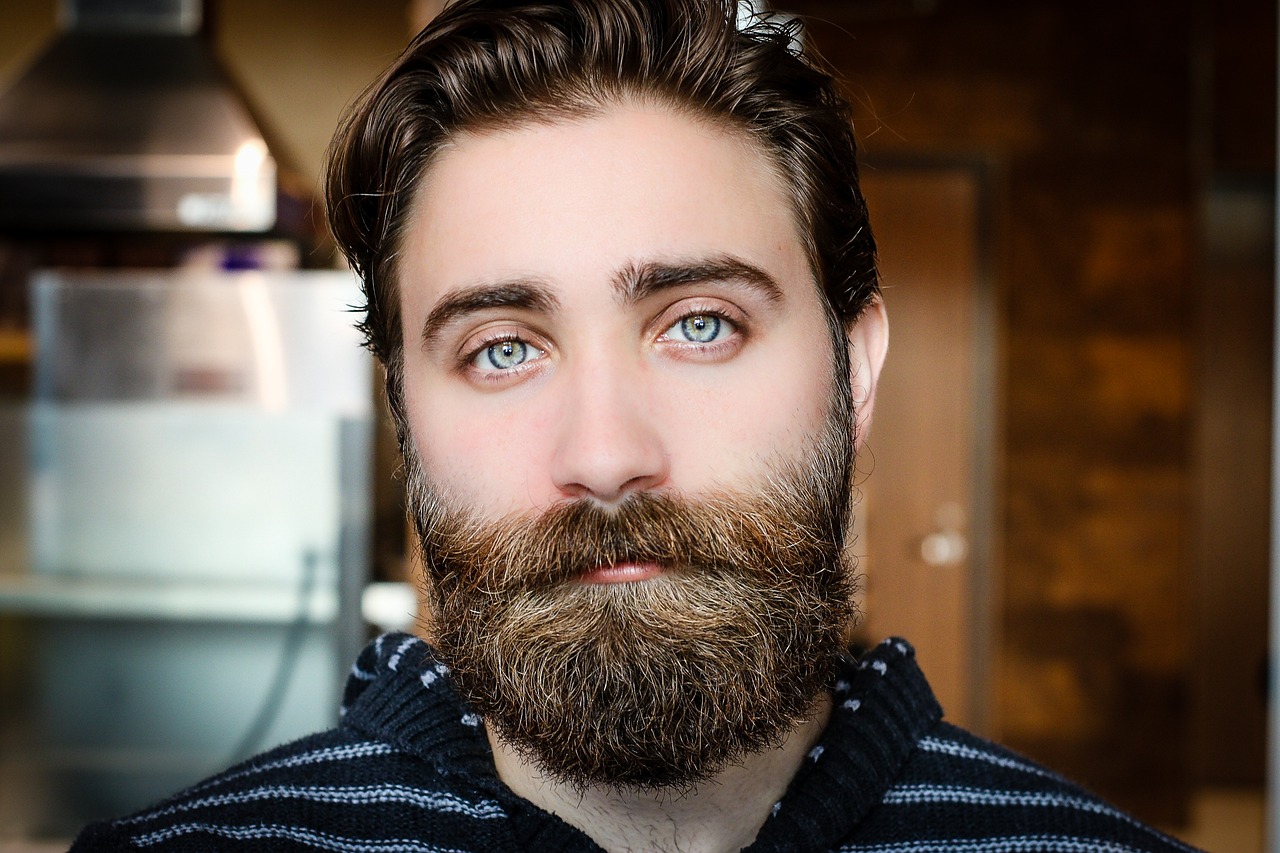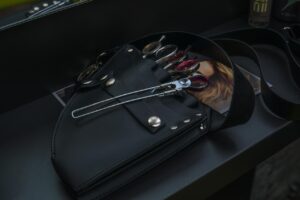Dye Your Beard, Not Your Skin: Why Safety Comes First
Welcome — this guide helps you color your beard without irritating your skin. Beard dyes can sting, stain, and trigger allergic reactions, especially on sensitive faces. Our goal: choose safer products, test properly, and apply cleanly.
You’ll learn about sensitive skin, ingredients to avoid, dye types, step-by-step patch tests, protective prep and application, soothing aftercare, and when to see a pro or try alternatives. Read on for clear, practical steps you can use today. Start safely and confidently — read on.




Top 5 Beard Dyes for Sensitive Skin: Gentle, Long-Lasting Picks
Understanding Sensitive Facial Skin and Why Beard Dye Can Cause Problems
What counts as sensitive facial skin?
Sensitive skin in the beard area reacts more easily than typical scalp or body skin. Common signs to watch for after product contact include:
A quick anecdote: a friend who rarely reacted to shampoo broke out after a beard tint — the face simply responded differently than the scalp.
Why the face is different from the scalp
Facial skin is thinner and has a richer blood supply than scalp skin, which means chemicals reach nerve endings faster and irritation shows up more quickly. Frequent shaving creates micro-abrasions that let dye ingredients contact deeper layers. Preexisting conditions — such as dermatitis, eczema, or rosacea — greatly increase susceptibility because the skin barrier is already compromised.
How beard hair and facial oils change risk
Beards trap dye next to the skin. Coarser hair can hold pigment and extend contact time against the face; a thick beard with product left in place is not the same as hair dye on the crown. Natural oils can act like a carrier, spreading dye into pores, or conversely create a slight barrier — effects vary person to person. That unpredictability is why a scalp-based routine often fails on the face.
Quick self-check: assess your personal risk
If you answered yes to any, treat dyeing your beard with extra caution and prioritize patch-testing and gentler formulations.
Ingredients to Avoid and Ingredients That Are Safer
Common irritants and why they matter
Beard dyes often contain a handful of ingredients that commonly trigger irritation or allergic reactions:
A quick real‑world note: people who tolerate scalp hair dye sometimes still react badly on the face because facial skin is thinner and more sensitive.
Gentler ingredients and helpful additives
Look for formulations that focus on skin comfort as well as color:
How to read labels and interpret claims
Scan ingredient lists for PPD, “para‑phenylenediamine,” resorcinol, “ammonium hydroxide,” or high‑level peroxides. “Fragrance/parfum” hides dozens of chemicals; avoid when sensitive. Terms like “hypoallergenic” or “dermatologist‑tested” aren’t tightly regulated — they’re useful flags but not guarantees. Best practice: request a full ingredient list, prefer minimal‑ingredient formulas, and always patch‑test (see next section for step‑by‑step testing).
Choosing the Right Type of Beard Dye for Sensitive Skin
A quick dye‑type run‑down
Know your options and what they mean for fragile facial skin:
Formulation format: why it matters
Creams, gels, foams, and conditioners deliver color differently:
Practical decision tips
Match longevity and coverage needs with the gentlest effective formula:
How to Patch-Test and Allergy-Test Safely (Step-by-Step)
Where and how to test
Pick a thin, discreet skin spot: behind the ear or the inner elbow are standard. If you can, also test a small square (about 1 cm) of actual bearded skin where the dye will touch — beard skin can react differently than arm skin.
Step-by-step patch test
What to look for (24–72 hours)
If a reaction appears
Never skip this step—even “natural” or “sensitive” labels—many people only discover sensitivity after a simple patch test.
Preparation and Application Techniques to Protect Your Skin
Pre-application prep
Clean and fully dry the beard area—no creams or oils—so the barrier product adheres. Apply a thin ring of petroleum jelly (Vaseline) or a specialized barrier like Cavilon along the hairline, around the cheeks, under the jaw, and across the neck. Think of it as invisible tape: it blocks dye from sinking into pores and makes cleanup far easier.
Tools & protective gear
Use disposable nitrile gloves and a narrow tinting brush or angled beard brush for control. Small disposable micro-applicators or a precise lip brush work great for edges. Keep cotton swabs and damp cloths within reach.
Good tool examples: Anjou Precision Tint Brush for concentrated application, a fine-tooth Kent beard comb to distribute color, and disposable micro-applicators for touch-ups.
Application technique (how to minimize skin contact)
Immediate actions if dye touches skin
Wipe fresh stains immediately with a damp cloth, then remove residue with oil (baby oil or olive oil) before washing with mild soap and water. If staining persists, use a manufacturer-recommended color remover or dermatology-safe cleanser.
Shaving, nicks, and abrasions
Never dye over broken skin. If you shave often, skip dyeing for a few days after shaving or cover nicks with petroleum jelly. Small cuts should be healed before applying dye to avoid irritation and absorption.
Aftercare and Maintenance to Reduce Irritation and Keep Color Looking Great
Rinse and cleanse immediately (but gently)
Right after timing is up, rinse with lukewarm water until the runoff is clear—residue trapped against the skin invites irritation. Then cleanse the beard and adjacent skin with a fragrance-free, pH-balanced cleanser (CeraVe Hydrating Cleanser or Vanicream). Pat dry; don’t rub.
Soothe and rebuild the barrier
Apply a fragrance-free, non-comedogenic moisturizer or barrier balm to the skin around the beard. Good examples: CeraVe PM (lightweight, niacinamide-rich), La Roche‑Posay Toleriane Ultra, or a thin film of petroleum jelly/Cavilon on vulnerable edges. Use a gentle conditioner or beard oil on the hair—look for alcohol-free, silicone-light formulas to avoid pore-clogging.
Extend color without stressing skin
To keep dye vibrant:
Watch for delayed irritation (what to look for)
If symptoms appear, stop all new products, rinse gently, apply cool compresses, and consider a short course of 1% hydrocortisone for mild itching. Seek dermatology care for severe swelling, widespread rash, blisters, or signs of infection.
Troubleshooting, When to Seek Professional Help, and Smart Alternatives
Immediate fixes and stain removal
If dye gets on skin, act fast. Gently rub an oil-based remover (olive oil, coconut oil, or a cleansing oil) into the stain, let it sit 30–60 seconds, then wipe with a soft cloth and cleanse with a mild face wash. For stubborn marks, specialty wipes or removers speed the job without scrubbing.
Color corrections and neutralizing unexpected tones
Uneven color? Try a targeted touch-up: use a semi-permanent or demi-permanent shade one level darker to blend patches, applying with a small brush and short development time. To neutralize brassy orange or yellow, use color theory:
Choose deposit-only products (color-depositing balms or conditioners) for temporary fixes so you can evaluate results before committing.
Mild irritation: stepwise home care
For mild redness/itching: stop active products, rinse, apply cool compresses, and use a fragrance‑free moisturizer. A single short course of 1% hydrocortisone can help—only after patching and for short-term use. Monitor closely for worsening signs.
Red flags — get immediate medical attention
Seek emergency care if you experience:
When to consult a dermatologist or colorist
See a dermatologist for suspected allergic contact dermatitis or infection. Book a consult with a professional colorist when you want color correction, but insist on a sensitive-skin plan: review ingredients, request a strand test, ask for low-peroxide/amine-free formulas, and a salon patch test.
Smart alternatives if dyes aren’t an option
These options keep your skin calm while still giving you choices for beard appearance.
Dye Smart: Keep Your Skin Calm and Your Beard Confident
Put safety first: choose gentle formulas, always patch-test, and use protective application methods to shield skin. Take time with preparation and aftercare—moisturize, soothe irritation promptly, and monitor reactions so color looks great without compromise.
If you’re unsure or spot persistent redness, swelling, or pain, stop and consult a dermatologist or professional colorist. Prioritize skin health over speed; a calm face and confident beard are worth the extra care. Try patch testing each new product and keep a skin-friendly routine daily.









Solid article, bookmarked. Quick neutral question: the guide recommends CeraVe Gentle Hydrating Shampoo for aftercare — is it okay to use right after rinsing the dye, or should you wait a day? My skin gets tight and itchy sometimes after dyeing, and I want to be gentle but also clean up residue.
I always wait a few hours and then use a small amount of CeraVe. If you get burning, do not apply lotions with fragrances — stick to plain, hypoallergenic stuff.
You can use CeraVe Gentle Hydrating Shampoo immediately after rinsing if the product instructions allow it — it’s gentle and helps remove residue without stripping color. If your skin feels inflamed or stinging, skip washing and rinse with cool water, then apply a soothing barrier like a fragrance-free moisturizer and monitor.
Really grateful for this guide — super practical. I tried a quick at-home dye once and my cheek ended up blotchy for three days. Followed the patch-test steps here and it saved me this time. Quick question: how long after a negative patch test is it safe to apply the full dye? The article says 48 hours, but are there cases where you’d wait longer? Also, any tips for reducing staining on the skin (I still get a faint brown halo even with barrier cream).
Great to hear the patch test helped! The standard recommendation is to wait 48 hours because many delayed reactions show up in that window. If you have very reactive skin or a history of sensitivities, waiting up to a week can give extra peace of mind. For staining: use a thin layer of petroleum jelly or a barrier balm, and remove excess dye immediately with a damp cloth and gentle cleanser. Framar Kolor Killer wipes also work well for stubborn stains.
Quick extra tip — if you use CeraVe Gentle Hydrating Shampoo as a light cleanser for the beard area post-dye, it can help lift surface stains without stripping color too much.
I’d add: exfoliate the area a day before (gently) so the barrier balm sits on top of clean skin. Also, Supmedic nitrile gloves are a must — saved my nails and fingers 😂
Hey all — followed this guide last week and used Cleverman Dark Brown Hair and Beard Dye with great results. Did the 48-hour patch test, used Supmedic gloves, and protected edges with a barrier. No irritation and color looks natural.
Small caveat: I had to trim a bit after dyeing because it made some lighter ends pop more. Also — Framar Kolor Killer Wipes worked wonders on my ear line. Will definitely follow the maintenance tips to keep it from fading too fast. 😊
Fantastic — appreciate the real-world report. Trimming after dyeing is a good tip because dyed tips can reflect light differently. For maintenance, use color-safe cleansers and limit hot water on the face.
Noah — I’d say Cleverman was easier to blend for me (dark brown). Just For Men can be good but it felt more pigmented. Do a strand or small beard-test first and pick a shade one step lighter than you think.
Nice! Which of the listed products would you recommend for a first-timer — Cleverman or Just For Men? I’m nervous about tone matching.
Thanks for the PPD warning — serious stuff. I’ve seen friends react badly to permanent dyes and it’s not worth risking your face for a shade. A few constructive points:
1) The ingredient list to avoid should be emphasized more (PPD, resorcinol, etc.).
2) Maybe include a short bulleted ‘safe alternative’ list for people who still want to darken their beard (temporary tints, mascara, Henna alternatives?).
3) For those who use Herb For Men Beard Dye – Deep Brown: do a tiny strand test too; hair porosity changes results a lot.
Otherwise, useful read.
Exactly — delayed reactions happen. If anyone notices redness, itching, swelling, or blistering at any time, stop use and seek medical advice.
Agreed on the strand test — my beard took color waaay different than my head hair. Henna gave me an orange surprise once 😬
Also, allergy tests should include a soap-free wash afterwards and re-checking the spot at 48 hours. Some reactions are delayed.
Good suggestions, Edward — we’ll consider adding a more prominent ‘red flags’ box for PPD/resorcinol and a quick alternatives bulleted list (temporary dyes, color-depositing conditioners, and henna-based options). Thanks for the input.
Hilarious that my beard drama went from ‘hipster cool’ to ‘why is my jaw brown’ real quick. This guide was actually the map out of chaos. A couple things I tried and would recommend to others:
– Supmedic Nitrile Exam Gloves — buy the 100 pack, you’ll use them for other stuff at home too.
– Framar Kolor Killer Wipes — lifesaver for edges.
– Did a patch test on my inner arm (48 hrs) and all good.
One weird thing: I used herb For Men Mustache & Beard Dye (dark) and the odor was way milder than the old boxed dyes. Anyone else notice that? Also — PSA: don’t skip the timer. I was late to dinner because I fell asleep after 15 mins and woke up with a two-tone beard 😂
Good point — I guess I just liked the milder smell. Also, anyone tried removing a stubborn halo with the Kolor Killer wipes vs. CeraVe? Which is less harsh?
Totally agree on the gloves. Also if you’re worried about timing, set a phone alarm and a backup — saved my face once. 😂
Thanks for sharing the checklist, James — love the humor. Yes, some beard-specific formulas (Herb For Men, Cleverman) are gentler-smelling and often have milder bases than traditional head-hair dyes. Still patch-test though — scent doesn’t equal safety.
Weirdly, I found Just For Men has stronger smell but lasts longer on my stubble. YMMV depending on hair type.
One more note: odor intensity isn’t a reliable indicator of allergenic potential. Always follow the Ingredients to Avoid section for safer choices.